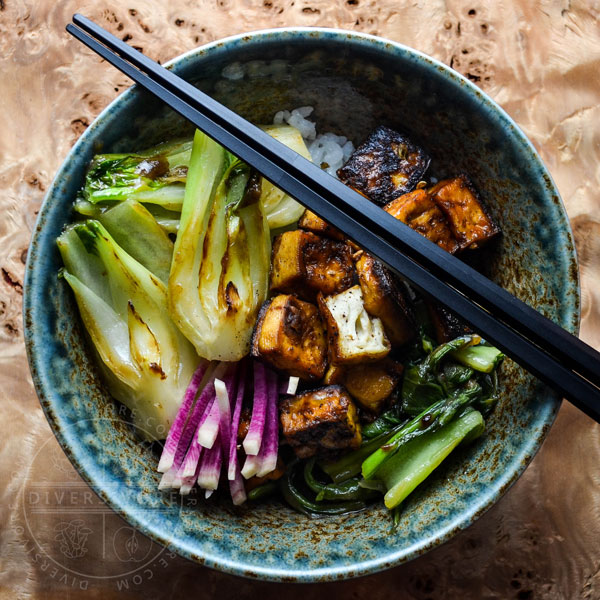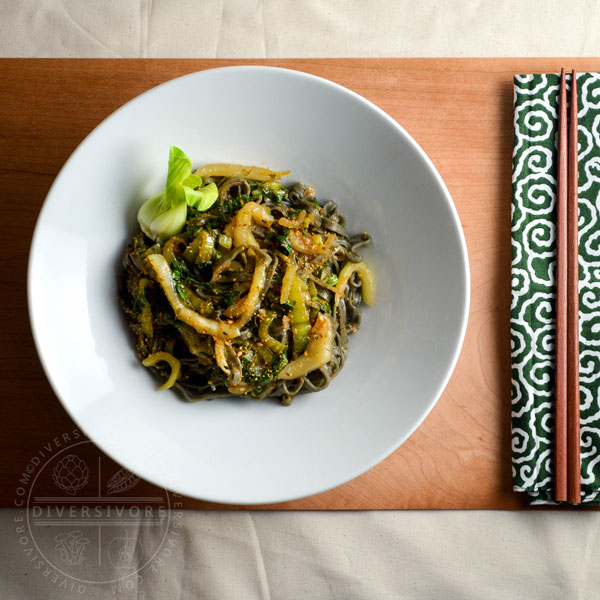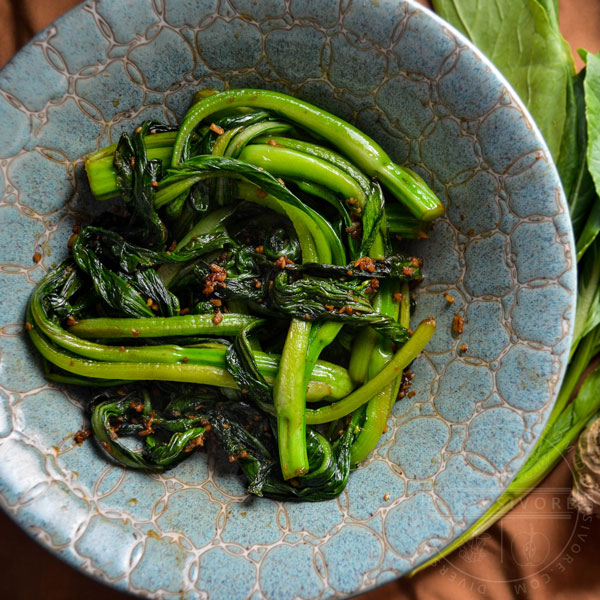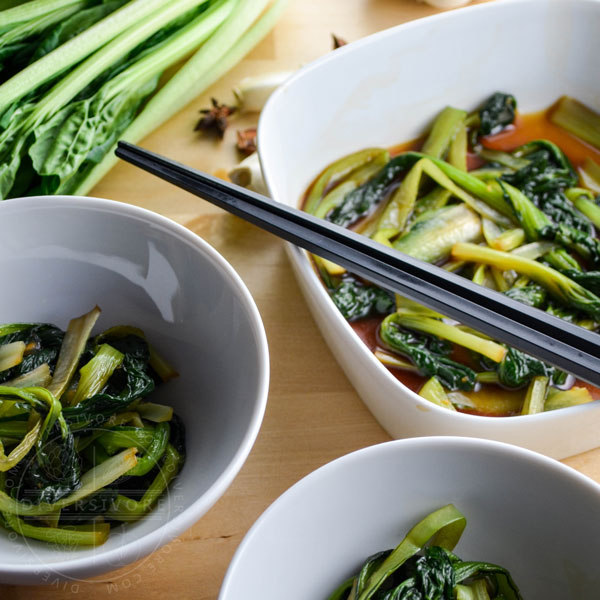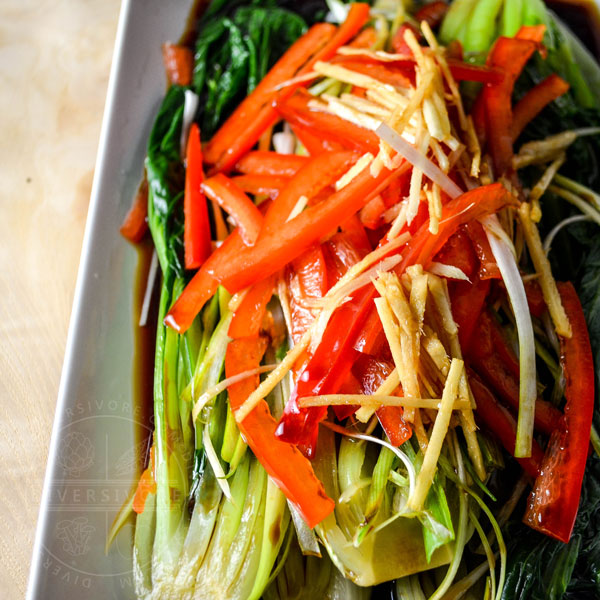How to Find, Choose, & Use
Tatsoi
(Rosette Bok Choy)
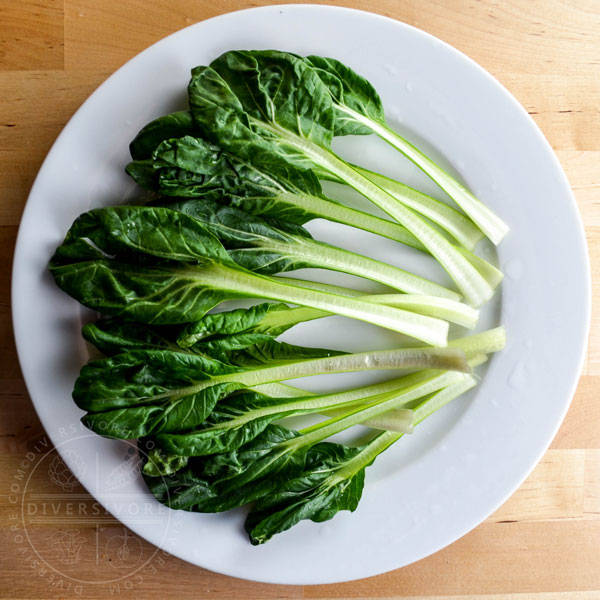
Share this Guide
The Basics
What Is It?
A leafy green member of the diverse Chinese cabbage group. Tatsoi is very similar to its close relative, bok choy
Seasonality
Most common in WINTER & SPRING, but sometimes available YEAR-ROUND
Flavour Profile
Green/Sweet/Bitter; generally mild with a slight mustard-green flavour
Other Names
Latin: Brassica narinosa
English: Rosette bok choy, spinach mustard, spoon mustard, flat cabbage
Chinese:- 塌菜 - tā cài (also 塌棵菜 - tā kē cài, piáo er cài, wū tā cài, or tǎ gǔ cài) (Mandarin); tak gou choy (Cantonese)
Tatsoi FAQs
Is tatsoi the same as bok choy?
No, but the two are very similar and generally fairly interchangeable.
Can you eat tatsoi raw?
Absolutely! While it's more commonly cooked, tatsoi makes a crisp and flavourful salad green, with a pleasant and generally mild mustard-like bite.
How-To
Find
While not as common as it's cousin bok choy, tatsoi can be found in Asian (particularly Chinese) grocery stores, especially in the winter and early spring.
Choose
Chose flat, compact, fresh looking heads of tatsoi, with vibrant greens. Avoid leaves with yellowing or damaged sections (see 'Need More Detail' below for specifics).
Prep
Difficulty: Low - Simply wash the tatsoi head in cold water, making sure to get in between the stalks where dirt can build up. The head is usually halved or quartered, and the individual leaves may be separated. The rather long spoon-shaped stalks can be used as-is, or cut into pieces.
Use
Can be eaten raw, though far more commonly cooked. Tatsoi is mild and fairly tender, so avoid overcooking it.
Store
Short Term: Refrigerate (unwashed, 3-7 days in a breathable plastic bag in the crisper)
Long Term: Blanch in boiling water 2 mins, drain and rinse with cold water, then freeze.
Culinary Info
Flavour Profile
Green/Mild/Slightly Bitter - Very similar to bok choy, tatsoi is mild, versatile, and fairly neutral, with a relatively sweet, very slightly bitter flavour. It has a mustard-like flavour that's usually a bit more pronounced than for bok choy. Raw and cooked flavours are fairly similar, though the texture differs markedly. Raw stalks are crisp (somewhat like celery) while the leaves have a texture like spinach.
Substitutions
Bok choy makes an excellent substitute for tatsoi. Chard is fairly similar in texture, though generally a bit more watery. Cooked spinach stands in well for the green leafy portion of tatsoi. Chinese napa cabbage makes a good substitute for the stalks, especially if chopped up in soups, dumplings, etc.
Cuisines
Most commonly encountered in Chinese cooking, and in East Asia in general. Tatsoi can be a bit more popular in the cuisines of colder regions because of its hardy growth habit.
Flavour Pairings
Tatsoi is mild and versatile enough to use with a wide variety of dishes and flavours. Bold Asian sauces and flavours (e.g. soy sauce, ginger, and garlic) are commonly used.
Varieties
Unlike its cousin bok choy, tatsoi isn't commonly available in a range of sizes or varieties. I have noticed that some tatsoi heads are much more vertical while others are very flat and broad, and there can be some variation in the size. None of this will affect your cooking or preparation significantly.
More Info
Nutrition
Exceptionally high in Vitamins A and C and moderately high in Calcium.Nutrition FactsTatsoi - 100 g (3.5 oz)Amount Per ServingCalories 22 Calories from Fat 3% Daily Value*Fat 0.3g0%Sodium 21mg1%Potassium 449mg13%Carbohydrates 4g1%Fiber 3g13%Protein 2g4%Vitamin A 9900IU198%Vitamin C 179mg217%Calcium 210mg21%Iron 1.4mg8%* Percent Daily Values are based on a 2000 calorie diet.Top-To-Tail
The entire above-ground portion of the young plant is eaten, including the leaves and stalks. The small flowers are also edible, though these are rarely present on commercially produced plants.
GMO Status
There is no GM or gene-edited bok choy in the human food supply. This plant and its relatives are monitored for potential GM cross-contamination (see note below)
Health & Science
- Exceptionally healthy and nutrient-dense
- Contains glucosinolates, which are chemical compounds that have demonstrated some cancer-protective benefits at low-to-moderate doses. Exceptionally high doses have been linked to thyroid dysfunction.Organic vs. Conventional
Both organic and conventionally grown tatsoi are commercially available, though organic availability is often very limited regionally. Note that tatsoi is a popular choice for home gardeners, as it's very cold hardy, even growing under some snow.
Tatsoi & Bok Choy Recipes
Share this Guide


